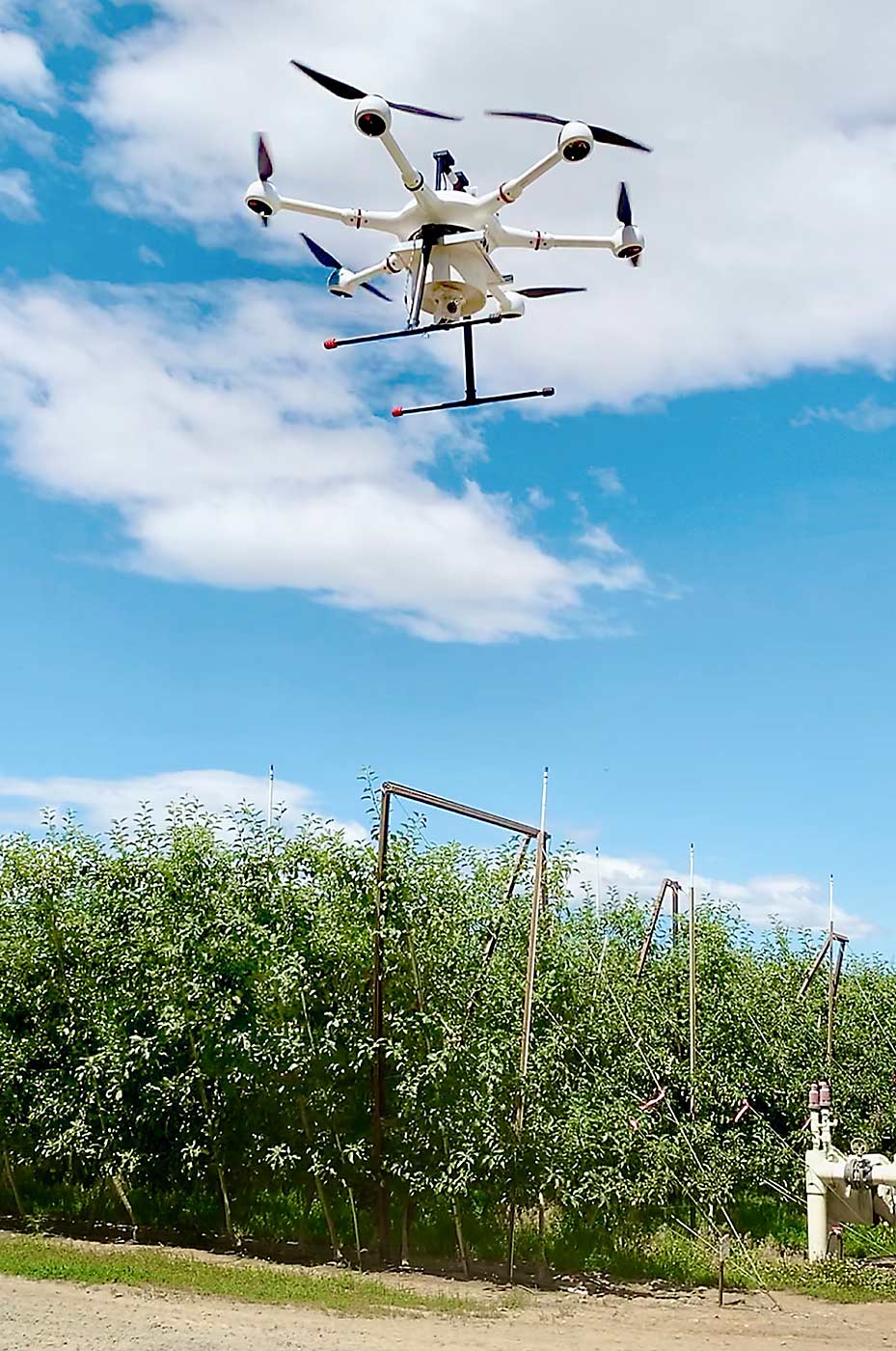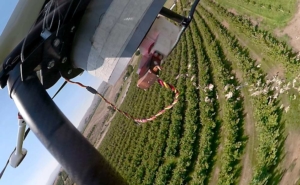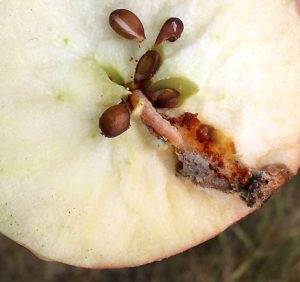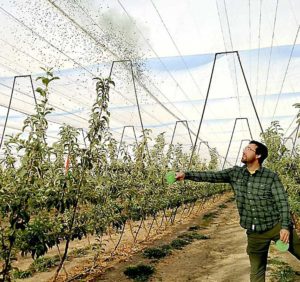
In just three years, sterile insect release has become such a popular commercial method of codling moth control in Washington that the company releasing the moths with drones cannot expand any further unless it builds its own rearing facility or finds some other source of bugs.
M3 Consulting Group has about 100 grower-customers covering about 4,000 acres of fruit country across Washington. That’s about the max the company can serve, said Nathan Moses-Gonzales, president of the startup.
M3 purchases the sterilized insects from a rearing facility in Osoyoos, British Columbia, operated by the Okanagan-Kootenay Sterile Insect Release Program. Sterile insect release sends irradiated moths to mate with the wild population, resulting in unviable eggs. The program has been mandatory in British Columbia orchards since 1994.
M3’s growth is on hold unless the Canadian program produces more moths to sell or the company starts rearing its own, which has been a goal all along, Moses-Gonzales said. He is confident venture capitalists will invest. He and his team have been eyeing property in Wenatchee, Yakima and Moses Lake.
They have blueprints and planned to start purchasing land and lining up contractors in the fourth quarter of 2020, but the coronavirus pandemic forced them to shelve things for a year. Once the company breaks ground, they expect a 12–18 month construction window, Moses-Gonzales said. He declined to estimate the cost of construction.
Growers seem pleased
M3 works with G.S. Long, Wilbur-Ellis and other agricultural service companies to deliver their insects to individual growers.
When some excess sterilized moths became available from another grower, G.S. Long hired M3 in 2020 to deploy them on some of its own organic acreage as part of its overall codling moth control routine, said Eladio Gonzales, G.S. Long farm manager with no relation to Moses-Gonzales. Results were so good, the farm had three straight weeks they did not have to spray any viruses that attack codling moth larvae. Trap counts went down about 60 percent during that three-week period.
“The product does work,” Gonzales said of the sterilized moths.
However, G.S. Long does not plan to continue on a more formal basis with M3 again in its own orchards this year, he said. For one thing, the orchards already have a robust control program. Meanwhile, the company has plans to plant some new blocks and is seeking areas in which to cut costs.
M3 plans to charge growers $470 per acre for 20 weekly releases in 2021.
Grower Denny Hayden of Pasco, Washington, hired M3 for weekly releases in 2019 and 2020. Before that, Hayden had blocks of organic Granny Smith and Fuji apples he couldn’t harvest because of codling moth damage, in spite of pheromone emitters, tree bands and two types of viruses sprayed every five days. Since the addition of sterilized moths, fruit damage is almost gone, and the farm has resumed more targeted sprays and methods.
He would like more growers to use the sterilized release to create an area-wide management tool, but many balk at the price tag.
“I don’t think it’s expensive,” Hayden said, when compared to the cost of labor and materials that weren’t working well enough anyway.
Sterile insect release always works, at least to some degree, in farms that hire G.S. Long, said Jenna Bjur, a data analyst with the company. Wild trap counts, stings and fruit damage go down, but to wildly varying degrees, she said. Hayden has the most successful story; he’s not average, she warned. The farms where the releases have less impact typically have weaker spray programs, she said.
All methods of codling moth control work better alongside other elements as part of an integrated pest management strategy, said Betsy Beers, a Washington State University entomologist who led a three-year pilot project using M3 drones to release sterilized moths over Washington orchards. Sterile release would be no different. (See “Releasing research on sterile insect release.” )
Beers also has heard good response from growers and believes sterile insect release could play a part in overall IPM.
“It’s really just hard to argue with success,” she said of some growers’ reports. “I think it is a potentially useful tool.” •
—by Ross Courtney









Leave A Comment